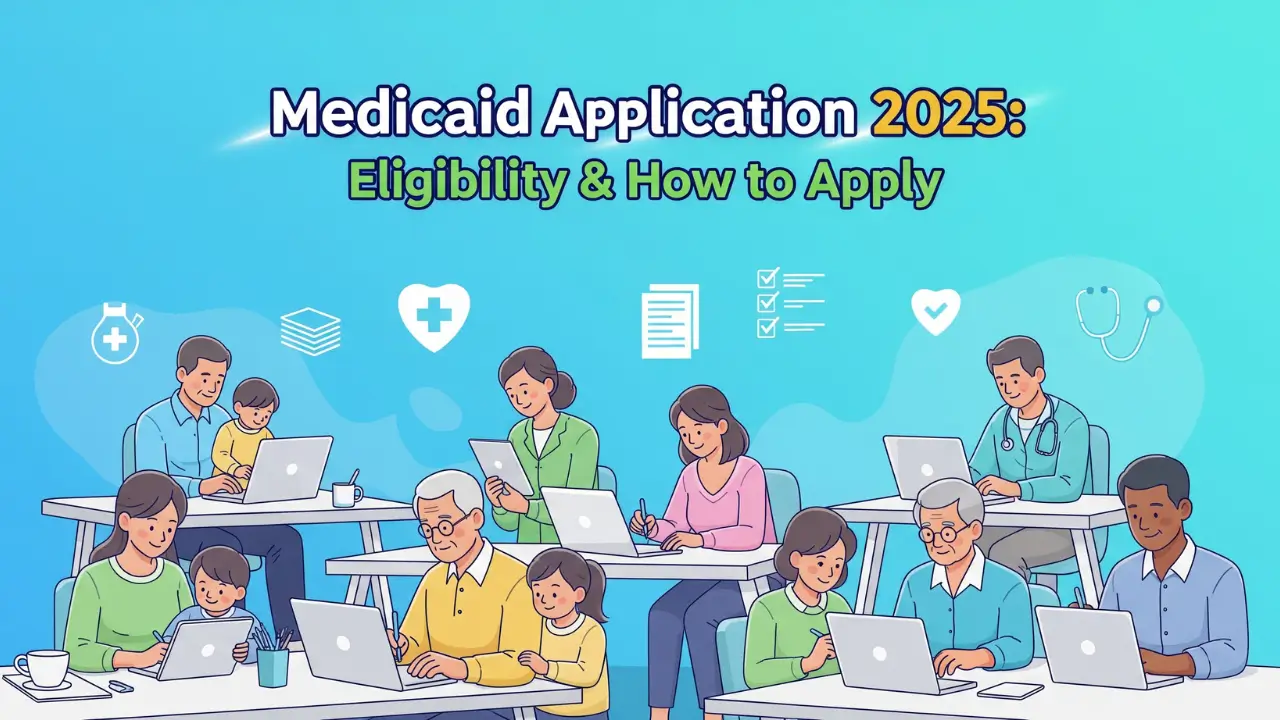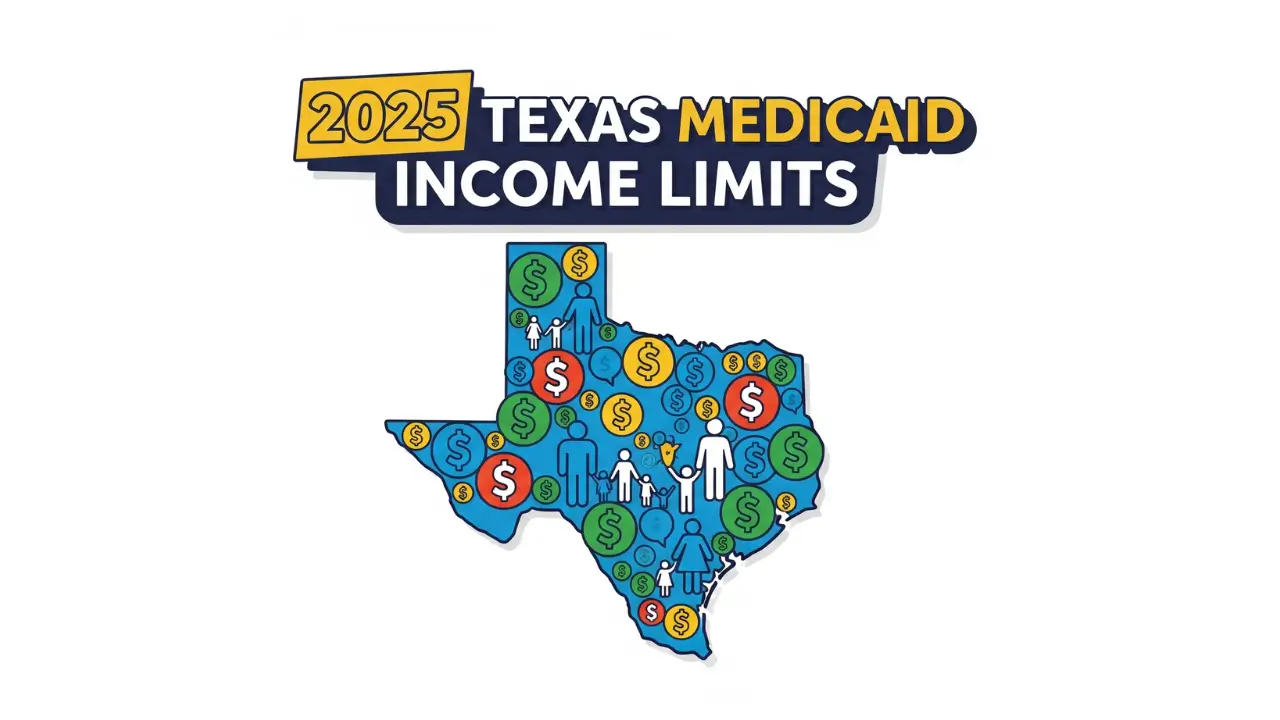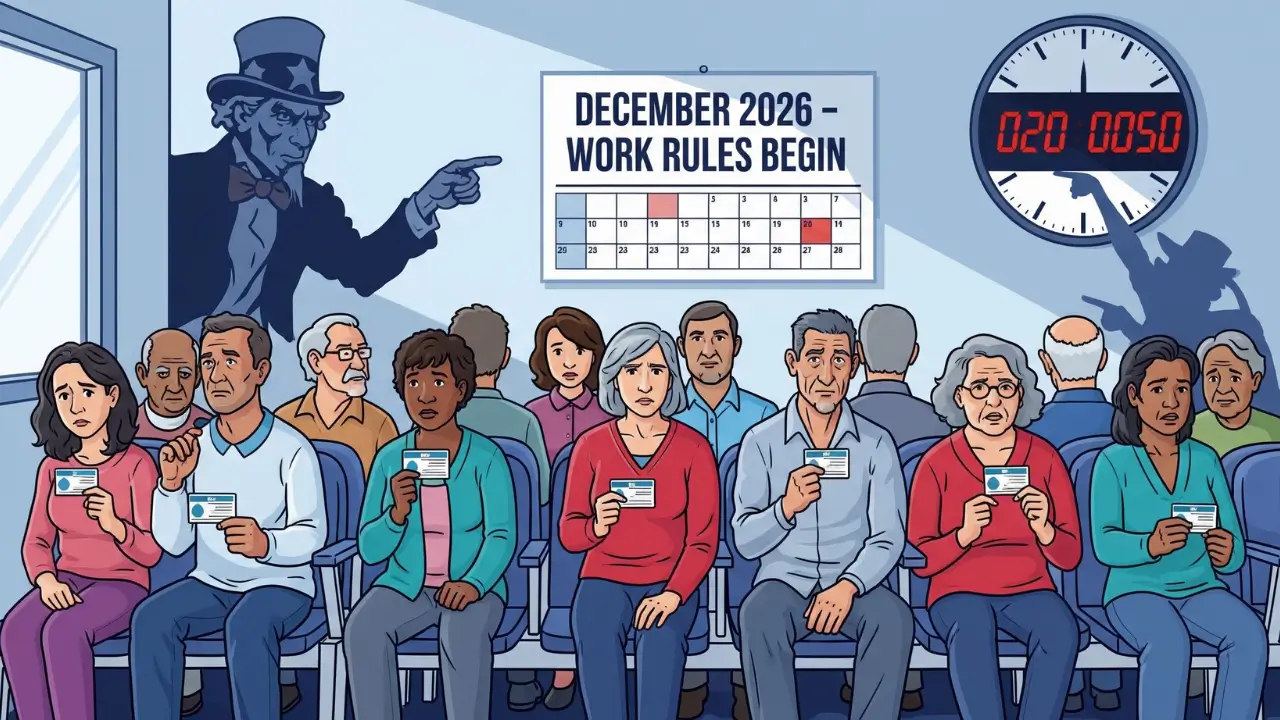Wondering how to apply for Medicaid in 2025? Start by checking your state’s Medicaid income limits to see if you qualify.
If you’re unsure, our Medicaid calculator makes it easy to estimate eligibility in just a few clicks.
Once you know you’re eligible, gather documents like proof of income, identification, and residency.
From there, you can apply online through your state’s portal, by mail, or in person at a local office. Applying early helps you avoid delays and ensures uninterrupted healthcare coverage.
What Is Medicaid?
Medicaid is a government health insurance program that helps low-income families, children, pregnant women, seniors, and people with disabilities get medical care.
It’s free or low-cost coverage that pays for doctor visits, hospital stays, prescriptions, and other healthcare needs.
Do You Qualify for Medicaid in 2025?
Your eligibility depends on your income, family size, and state. Here are the basic requirements:
Income Limits for 2025
For Adults (ages 19-64):
- In expansion states: Up to 138% of Federal Poverty Level
- In non-expansion states: Around $967/month for single person, $1,450/month for couples
For Children: Much higher income limits – often 200-300% of poverty level
For Pregnant Women: Varies by state, typically higher than regular adult limits
For Seniors and Disabled: Income limits range from $967-$1,795/month for individuals, $1,450-$2,658/month for couples
Note: These are general ranges. Each state sets its own limits, so check your specific state requirements.
Who Usually Qualifies
- Low-income families with children
- Pregnant women
- Adults 65 and older
- People with disabilities
- Some low-income adults (in states that expanded Medicaid)
Documents You Need Before Applying
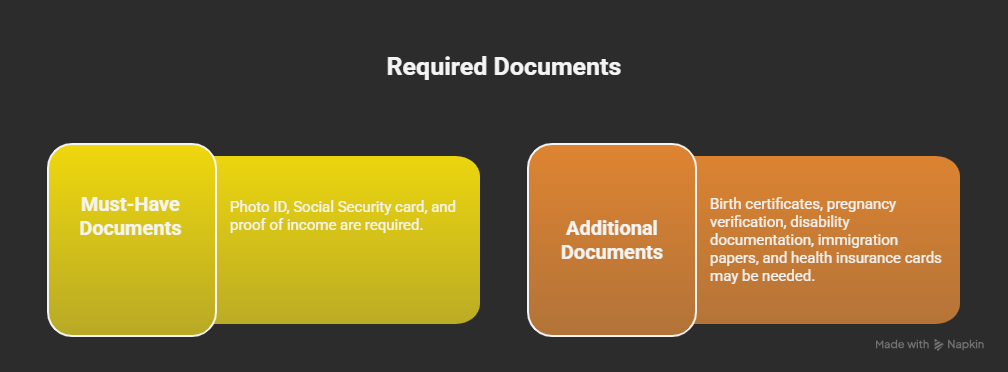
Get these ready before you start:
Must-Have Documents
- Photo ID (driver’s license or state ID)
- Social Security card for everyone applying
- Proof of income for last month:
- Pay stubs
- Bank statements
- Unemployment benefits letter
- Social Security benefits statement
Additional Documents (if they apply to you)
- Birth certificates for all family members
- Pregnancy verification (if pregnant)
- Disability documentation
- Immigration papers (if not U.S. citizen)
- Current health insurance cards
4 Ways to Apply for Medicaid
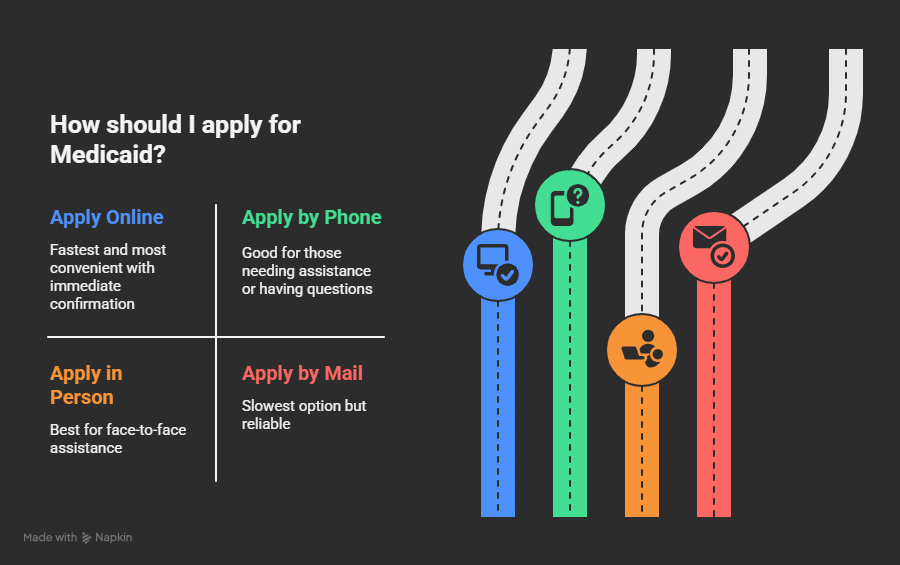
1. Apply Online (Fastest – Recommended)
- Visit your state’s Medicaid website or Healthcare.gov
- Available 24/7
- Get confirmation immediately
- Usually processed within 2-4 weeks
2. Apply by Phone
- Call your state Medicaid office
- Call Healthcare.gov: 1-800-318-2596
- Good if you need help or have questions
3. Apply in Person
- Local Medicaid office
- Community health centers
- Hospitals (many have enrollment help)
- Best if you need face-to-face assistance
4. Apply by Mail
- Download forms from your state website
- Slowest option but still works
- Keep copies of everything you send
Step-by-Step Application Process
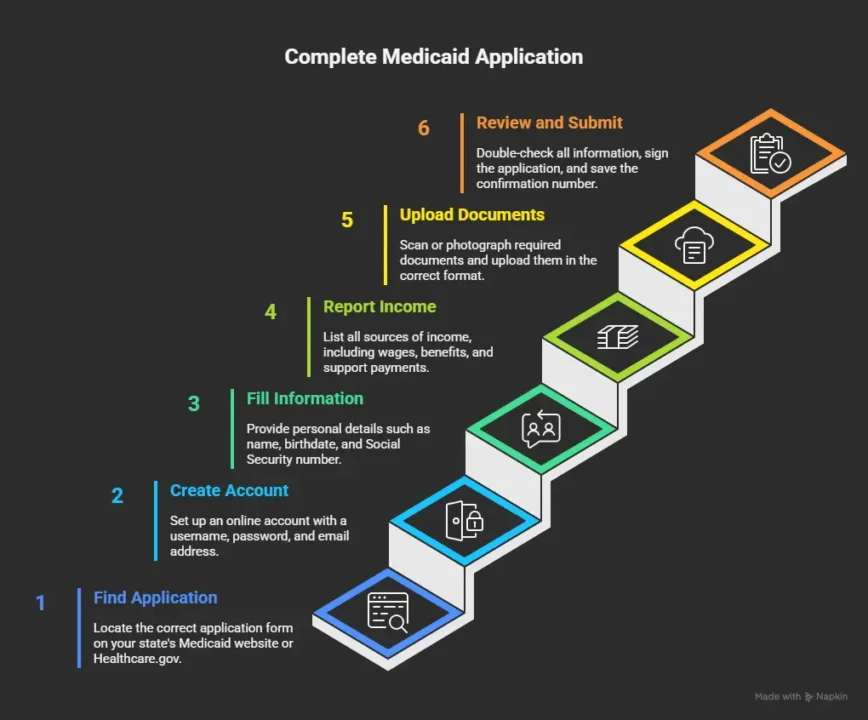
Step 1: Find Your State’s Application
Go to your state’s Medicaid website or Healthcare.gov to find the right application for your state.
Step 2: Create Your Account (Online Applications)
- Make a username and password
- Use an email you check regularly
- Write down your login information
Step 3: Fill Out Personal Information
For each person applying, you’ll need:
- Full legal name
- Date and place of birth
- Social Security number
- Home address and phone number
- Relationship to other family members
Step 4: Report Your Income
List all money coming in:
- Job wages (before taxes)
- Unemployment benefits
- Social Security payments
- Child support
- Any other regular income
Pro tip: Be accurate but don’t forget the 5% income disregard – this means a portion of your income doesn’t count when determining eligibility.
Step 5: Upload Your Documents
- Take clear photos or scan documents
- Make sure all text is readable
- Save documents as PDF, JPG, or PNG files
- Upload exactly what they ask for
Step 6: Review and Submit
- Double-check all information
- Sign electronically or print and sign
- Save your confirmation number
- Print a copy for your records
What Happens After You Apply
Timeline
- Processing time: Applications vary by state and may require proof of income, assets, and residency
- Regular applications: Up to 45 days
- Disability applications: Up to 90 days
- Emergency situations: Much faster
What to Expect
- Confirmation: You’ll get proof they received your application
- Review period: The state checks your information
- More info requested: They might ask for additional documents
- Decision: You’ll get a letter saying yes or no
If They Need More Information
- Respond quickly (usually within 10 days)
- Send exactly what they ask for
- Use the same method you used to apply
- Keep copies of everything
Common Mistakes That Delay Applications
- Incomplete applications – Answer every question
- Missing documents – Upload everything they request
- Wrong income amounts – Use gross (before tax) income
- Forgetting family members – Include everyone in your household
- Not responding to requests – Check your mail and email regularly
What If You’re Denied?
Don’t give up! You have options:
Appeal Your Decision
- You have 60 days from the denial letter date
- Request a “fair hearing” in writing
- Gather more supporting documents
- Get help from legal aid or advocacy groups
Common Reasons for Denial
- Income reported too high
- Missing required paperwork
- Application not complete
- Didn’t meet state requirements
Special Situations
If You’re Pregnant
- Apply immediately – don’t wait
- Coverage often starts right away
- May qualify even with higher income
- Coverage continues 60 days after birth
If You Have a Disability
- Longer processing time (up to 90 days)
- May need medical evaluations
- Can apply for other programs at the same time
- Coverage may go back 3 months
Emergency Medical Situations
- Apply from the hospital if needed
- Emergency Medicaid may cover treatment
- Can apply for coverage going back 3 months
- Available regardless of immigration status in some cases
Keeping Your Medicaid Once You Get It
Annual Renewals
- Complete renewal forms on time every year
- Usually done online or by mail
- Keep your information updated
Report Changes Within 10 Days
- New job or income change
- Move to new address
- Family size changes (new baby, marriage, etc.)
- New health insurance
Stay in Touch
- Keep your phone number and address current
- Read all mail from Medicaid office
- Respond to requests quickly
Free Help Is Available
Don’t struggle alone – these people can help you for free:
Where to Get Help
- Certified application counselors at community health centers
- Hospital financial counselors
- Local social services offices
- Non-profit organizations
- Call 2-1-1 for local resources
National Help Lines
- Healthcare.gov: 1-800-318-2596
- Your state Medicaid office (find online)
- Legal aid for appeals and complex situations
Frequently Asked Questions
Q: How much does Medicaid cost? A: Medicaid is free or very low-cost. You might pay small copays for some services.
Q: Can I apply if I’m not a U.S. citizen? A: Some non-citizens can qualify. Non-U.S. Citizens must provide documentation showing lawful status.
Q: What if my income changes after I apply? A: Report income changes within 10 days. Your coverage might change, but you won’t lose it immediately.
Q: Can I have Medicaid and other insurance? A: Yes, Medicaid can work with other insurance as secondary coverage.
Q: How far back can Medicaid coverage go? A: Up to 3 months before you applied, if you were eligible during that time.
Take Action Today
If you think you might qualify for Medicaid:
- Gather your documents using the list above
- Go to your state’s website or Healthcare.gov
- Start your application – you can save and come back later
- Get help if you need it – don’t hesitate to call for assistance
- Apply even if unsure – let them determine if you qualify
Remember: Medicaid coverage can be life-changing. Even if you’re not sure you qualify, it’s worth applying. The worst they can say is no, but you might be surprised and get approved for healthcare coverage that could save you thousands of dollars.
Ready to apply? Find your state’s Medicaid application at Healthcare.gov or search “[Your State] Medicaid application” online.

